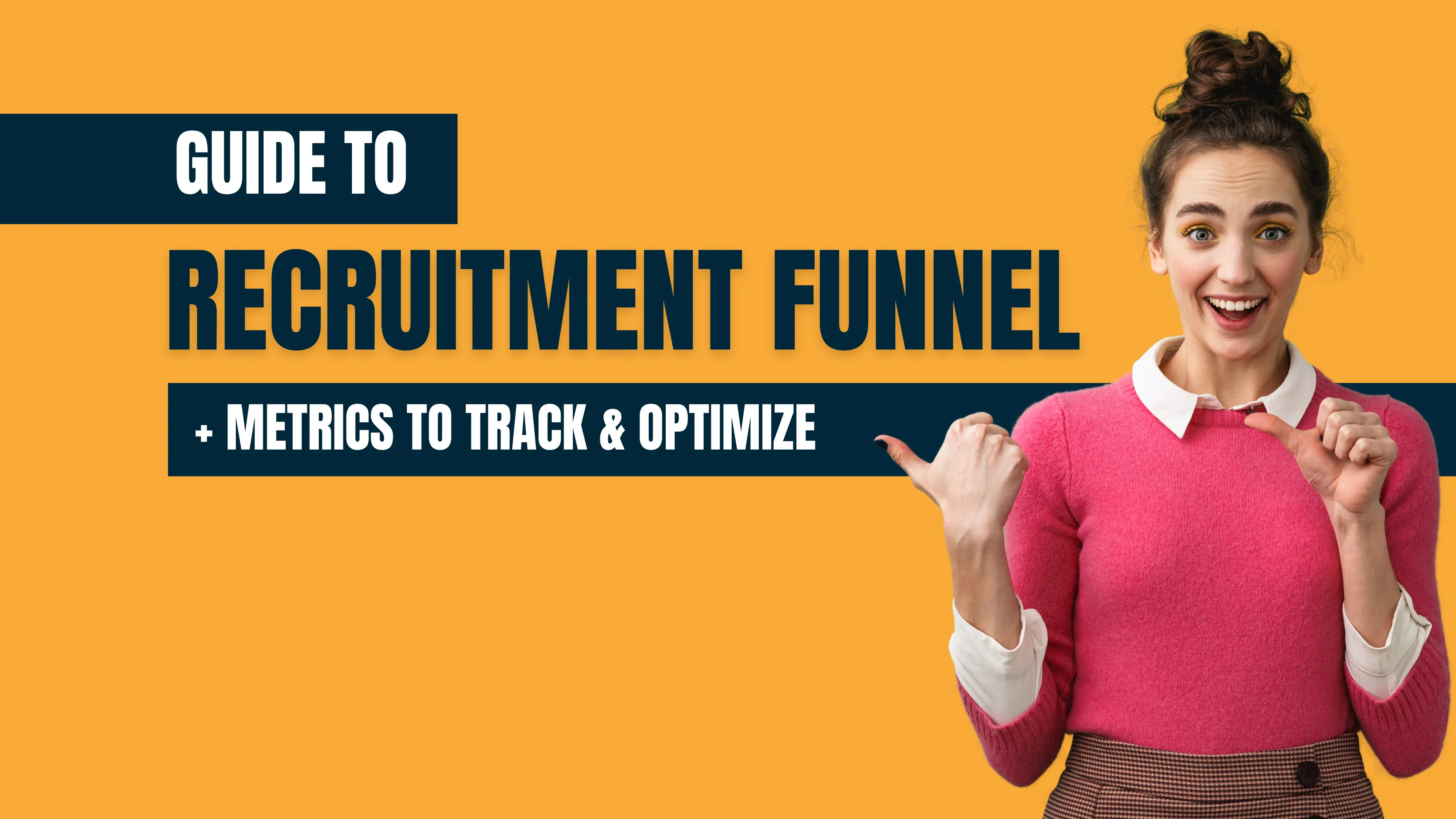Hiring bias is a danger to many industries. The tech industry, in particular, suffers from an alarming amount of recruitment bias. While conscious biases such as gender-pay gaps are easy to identify, unconscious bias in hiring is relatively difficult to pinpoint.
Unconscious hiring bias may dramatically hinder the quality of your recruitment process. Consequently, recruiters may overlook potentially ideal candidates or end up hiring unfit applicants. Thus, to fully optimize your recruitment funnel, hiring managers and recruiters must minimize unconscious prejudices.
This article will explore how unconscious bias may influence your recruitment funnel and see what steps recruiters can take to minimize prejudice.
What is unconscious bias in hiring?
Unconscious hiring bias refers to the unconscious prejudices of recruiters towards certain applicants during the recruitment process. This recruitment bias usually rests on the first impression you have of a candidate and depends on factors not formally assessed during hiring assessments.
Unconscious hiring prejudices may arise during the early stages of the hiring process – such as during resume assessment. These biases often influence the recruiter’s decisions about certain applicants, either positively, negatively, or both.
What are the types of unconscious hiring bias?
There are many types of unconscious bias in hiring that may seep into your recruitment process and influence hiring decisions. Some common examples include:
- Confirmation bias: when a recruiter forms an opinion about the candidate early on, influencing how they view the candidate’s profile.
- Expectation anchor: when a recruiter has certain expectations from the applicants.
- Halo effect: when a recruiter attributes positive qualities to a candidate unnecessarily, giving them a ‘halo.’
- Horn effect: opposite to the halo effect, the horn effect occurs when a recruiter unnecessarily attributes negative qualities to an applicant.
- Overconfidence bias: when a recruiter falls prey to overestimating their own assessment capabilities.
- Conformity bias: this type of bias is similar to peer pressure, except it occurs among recruiters. In conformity bias, a single recruiter in the panel may have a different opinion about a candidate from the other recruiters. However, due to peer pressure, the single recruiter may align their opinion with their team’s.
- Affect heuristics: when recruiters take shortcuts mentally to quickly conclude the applicant’s abilities without thoroughly examining the application.
- Intuition bias: when a recruiter relies on their gut feelings more than the facts.
- Illusory correlation: a misconception that specific questions give better insights into a candidate’s aptitude when in reality, they don’t.
- Similarity attraction bias: when a recruiter favours applicants that have similar qualities to them.
- Affinity bias: Like attraction bias, affinity bias is when a recruiter experiences a natural affinity towards a candidate.
- Beauty bias: when a recruiter prioritizes good-looking candidates for a role.
- Contrast effect/judgment bias: when recruiters compare adjacent resumes against each other instead of judging them all according to the same standard.
The consequences of unconscious hiring bias
A major ramification of unconscious hiring bias is that applicants may be unsuccessful despite being qualified or even ideal for the position. Consequently, recruiters may overlook top candidates for a given role, costing the company hiring resources and resulting in missed opportunities.
Unconscious bias during the hiring process also puts recruiters at risk of hiring unsuitable candidates. This is because biases taint the recruitment process, resulting in possibly skewed decisions.
Hiring the wrong applicant invites losses in employee coordination, integration, and financial losses. Thus, unconscious biases in the recruitment process also hinder your company’s overall productivity.
Unfortunately, unconscious hiring biases are not limited to the recruitment stage itself. Biases may also creep into a company’s decision regarding the location to target their recruitment campaign. Prejudices may even influence hiring decisions as early as when recruiters pen down the job description and formulate a marketing campaign.
Unconscious biases may lead to recruiters targeting the wrong talent pools or locations, or missing out on the best applicants, consequently decreasing the overall quality of hires.
When it comes to minimizing hiring prejudices, companies must take measures beyond diversifying their workforce. In addition to this, recruiters should also focus on diversifying the hiring process itself and maximizing its reliability.
Benefits of reducing unconscious bias?
Increasing diversity in your workforce is a necessary step towards minimizing unconscious hiring bias, and a great deal of research supports this claim. According to McKinsey & Company, companies with the most racially and ethnically diverse workforces are 35% more likely to have financial returns above the national industry median.
The same research revealed that companies with the most gender-diverse workforce are 15% more likely to have above-median returns in their industry.
McKinsey & Company’s research shows a linear relationship between a US-based company’s racial, ethnic diversity and financial performance. In the previous section, we discussed how biases in the recruitment funnel could decrease your chances of acquiring top talent. Conversely, minimizing recruiter bias can help recruiters assemble the perfect team.
While acquiring top talent may not yield immediate financial returns, having a diverse team can improve customer orientation, employee satisfaction, and team harmony. Over time, these improvements encourage the company to prosper, driving revenue and increasing returns.
5 ways to reduce unconscious hiring bias
By now, the importance of reducing hiring biases is evident. But how can recruiters minimize unconscious biases or eliminate them altogether?
Here are some ways to reduce unintended prejudices that may arise during the recruitment process:
Craft thoughtful job descriptions and advertisements
Gender bias is a dangerous phenomenon that should be eliminated during the early stages of recruitment. Recruiters can tackle this bias by carefully wording job descriptions and advertisements. For example, when listing the qualities you are looking for in a candidate, avoid using gender-specific pronouns such as ‘he’.
Take advantage of blind hiring
In hiring, unconscious biases creep in from the early stages, so it’s best to nip them in the bud. One way to reduce unconscious biases is by removing the names and addresses of the applicants from their resumes.
An applicant’s name or address may reveal their gender or ethnicity. By removing the applicant’s credentials from the resume, recruiters don’t stand the chance of judging anyone based on their gender, race, or cultural background. Thus, blind hiring allows the hiring teams to focus on a candidate’s qualifications and reduces the risk of unconscious biases.
Train your team against hiring bias
Reducing implicit bias in hiring requires recruiters and hiring managers to train themselves against it actively. The first step in training is to become aware of how such biases arise and how you can identify them.
Unconscious prejudices don’t operate on, well, a conscious level, and so they often go overlooked. If you sit down and think to yourself, “what unconscious biases do I hold?” then an answer is unlikely to appear.
Instead, unconscious biases can be identified by assessing your actions, culture, and strategy. For example, we mentioned how gender bias can be limited by checking your job advertisements for appropriate pronouns. To identify unconscious gender biases, take a look at your previous ads – did you fail to use neutral or inclusive pronouns?
After singling out any unconscious prejudices, it’s time to minimize their influence or eliminate them altogether. Other than actively trying to avoid these biases, strategies like blind hiring or screening using skill tests can help you effectively filter out unconscious bias from your recruitment process.
Standardize your job interviews
A structured job interview is one where the questions are similar for all candidates. In this interview format, candidates are evaluated on the same criteria with the help of tools like a standard scoreboard.
Standardizing your job interviews can help recruiters minimize prejudices such as affinity and beauty biases. To recap, affinity bias occurs when a recruiter experiences a natural affinity towards the applicant, and beauty bias refers to discrimination based on looks. With the help of a structured recruitment process, both these prejudices and other unconscious biases are reduced.
Use skill assessment tests
Till now, we’ve discussed methods for reducing unconscious hiring biases. But what if you could eliminate them altogether? While this may sound too good to be true, there are practical ways of removing hiring prejudices from your recruitment funnel.
Hiring biases occur because humans are innately prejudiced – at most, recruiters can train themselves against unconscious biases. Unfortunately, however, hiring prejudices can rarely be eliminated entirely. This is why skill tests are the only way to truly eliminate unconscious biases – because they remove human evaluation from the process entirely.
Technical skills assessment platforms like WeCP use AI-based technologies to assess candidates quantitatively. Thus, recruiters can evaluate candidates solely based on their skills and technical knowledge. In addition, with WeCP, recruiters can generate custom tests tailored to specific technical roles, paving the way for reliable, efficient, and unbiased evaluation.
Conclusion
To obtain a high-value, motivated, and diverse workforce, hiring managers must optimize the recruitment funnel to acquire top candidates. A vital step towards achieving the perfect recruitment process involves reducing unconscious hiring prejudices.
With an industry-leading skill assessment platform like WeCP (We Create Problems), tech recruiters can eliminate unconscious hiring bias and guarantee quality hires.
Schedule a demo now to learn more about how WeCP can help you recruit the best talent.


.png)








.svg)